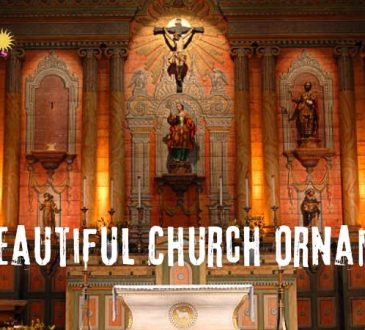The Timeless Beautiful Church Fountains: A Reflection on Their Spiritual Significance
Throughout history, church fountains have held a special place in the hearts of both the faithful and admirers of architectural beauty. These exquisite water features, often located in the courtyards or gardens of churches, serve a dual purpose: they are not only functional in providing a source of clean water but also hold profound symbolic and aesthetic significance. In this article, we will explore the enchanting world of Beautiful Church Fountains, delving into their historical evolution, spiritual symbolism, and the architectural marvels that make them timeless works of art.
Contents
I. A Glimpse into History

The history of church fountains is intertwined with the history of Christianity itself. The earliest church fountains can be traced back to ancient times when Christian communities began to flourish. In the early Christian era, they were primarily functional, providing a place for ritual purification before entering the sacred space of the church.
- Roman Origins
Many church fountains draw inspiration from Roman designs, which featured ornate basins, sculptures, and intricate plumbing systems. These fountains were not only practical for washing hands but also served as a means to symbolize the spiritual cleansing of one’s soul before entering the house of worship.
- Medieval Europe
During the medieval period in Europe, church fountains took on more elaborate forms, often featuring Gothic or Romanesque architectural elements. These fountains became integral components of the church’s overall design, enhancing the spiritual experience of those who visited. Some of the most famous examples from this era include the Fontana Maggiore in Perugia, Italy, and the Fountain of Saint-Sulpice in Paris, France.
- Renaissance and Beyond
The Renaissance period brought a renewed interest in classical architecture, leading to the creation of exquisite church fountains adorned with sculptures of saints, angels, and biblical scenes. These fountains not only served as functional elements but also as expressions of artistic and spiritual devotion.
II. Symbolism and Spirituality
Church fountains are more than just architectural features; they are symbols deeply rooted in religious and spiritual traditions. Their significance goes beyond mere aesthetics, as they hold powerful meanings within the context of Christianity and other faiths.
- Baptism and Renewal
One of the primary spiritual purposes of church fountains is their association with baptism. Baptism is a central sacrament in Christianity, symbolizing the cleansing of sins and rebirth in Christ. Church fountains represent this transformative experience, as the act of dipping one’s fingers into the holy water reminds the faithful of their own baptism and the opportunity for spiritual renewal.
- Purification and Sanctification
Church fountains are also used for ritual purification before entering the church. This practice harkens back to ancient traditions of cleansing oneself physically and spiritually before approaching the divine. The water in these fountains is often blessed by a priest, imbuing it with spiritual significance.
- Connection to Nature
The presence of water in church fountains serves as a reminder of the natural world and the life-giving properties of water. In Christianity, water is often associated with creation and the Holy Spirit, reinforcing the connection between the physical and spiritual realms.
III. Architectural Elegance

The architectural beauty of church fountains is a testament to human creativity and craftsmanship. These fountains come in a wide variety of styles, each reflecting the artistic trends and cultural influences of their respective time periods.
- Gothic Marvels
During the Gothic era, church fountains were often characterized by pointed arches, intricate tracery, and detailed stonework. The Fontaine Saint-Michel in Paris is a prime example of a Gothic-style church fountain, featuring a towering archangel Michael slaying a dragon.
- Baroque Extravagance
In the Baroque period, church fountains became even more ornate and elaborate. These fountains featured opulent sculptures, lavish decorations, and cascading water features. The Trevi Fountain in Rome, although not located within a church courtyard, is a famous Baroque masterpiece that showcases the grandeur of this architectural style.
- Modern Interpretations
Contemporary church fountains continue to evolve, often blending traditional elements with modern design sensibilities. Architects and artists are constantly experimenting with new materials and technologies to create fountains that are not only functional but also visually stunning.
IV. Preservation and Restoration
10The Timeless Beautiful Church FountainsAs with any historical architectural element, the preservation and restoration of church fountains are vital to ensuring their continued beauty and significance. Many organizations and individuals dedicate themselves to the upkeep of these precious pieces of history.
- Conservation Efforts
Conservationists work diligently to maintain the structural integrity of church fountains, protecting them from the ravages of time, weather, and pollution. Regular cleaning, repair, and restoration are essential to keeping these fountains in their best condition.
- Cultural Heritage
Recognizing the cultural and historical importance of church fountains, many communities and governments allocate resources to protect and restore them. These efforts often involve collaboration between religious institutions, conservationists, and art historians.
Conclusion
Church fountains are not just architectural features; they are living symbols of spirituality, history, and artistry. These timeless creations have evolved over centuries, adapting to changing architectural trends while maintaining their spiritual significance. As we marvel at the beauty of church fountains, we are reminded of the enduring power of faith and the boundless creativity of human expression. In preserving and celebrating these remarkable structures, we honor both our cultural heritage and the spiritual traditions that continue to inspire and uplift us.



